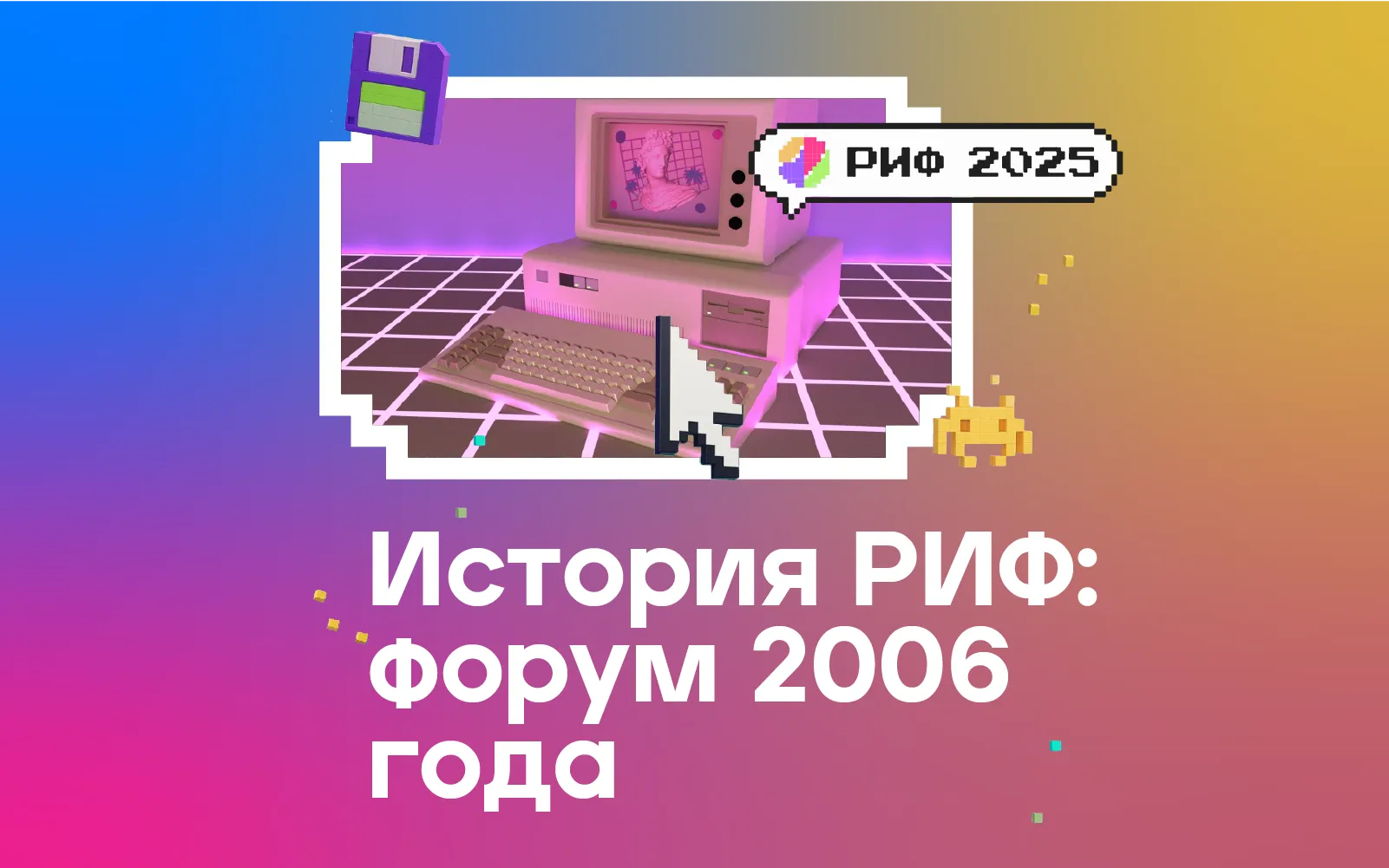RIF 2006: “We’re Rushing, We Can’t Keep Up”
RIF-06 broke records in both scope and scale. For the first time in its history, the forum drew more than 1,000 people—1,327 representatives from over 800 organizations. Delegates came from dozens of cities, including St. Petersburg, Novosibirsk, Krasnoyarsk, Samara, Kazan, Vologda, Kaliningrad, Moscow, Chelyabinsk, Norilsk, Perm, Voronezh, and Krasnodar. Guests from Belarus also joined the event.

Organizing Challenges
The phrase in the headline came from Jan Khan-Magomedov, ROCIT’s executive director and one of Russia’s internet pioneers, who chaired the RIF’06 plenary. His words perfectly captured the forum’s atmosphere.
The tenth forum offered more than 100 reports covering investment, e-government, cybersecurity, internet regulation, and the development of Russia’s information society. Topics ranged from copyright law and content distribution to search optimization, spam, broadband, e-commerce, and distance learning.
Particular emphasis was placed on IT development in Russia’s regions. For the first time, the forum hosted a dedicated block, “Days of Russia’s Regions,” aimed at shaping the map of the nationwide RIF Marathon scheduled to begin in April 2006. ROCIT planned regional workshops to address the most pressing problems of Runet directly on-site.
With the surge of participants, logistics were stretched to the limit: four sections ran simultaneously, and the scientific-practical program expanded to three full days.
User Habits
By the end of 2005, Russia’s internet audience reached nearly 22 million—more than four times the number in 2000, with growth averaging about one percentage point per season. Beyond Moscow and St. Petersburg, Murmansk, Kamchatka, and Magadan regions emerged as leaders in expanding internet penetration.
As expected, statistics confirmed that Russian internet users’ incomes exceeded the national average. Audience research revealed striking behavioral patterns: nearly 10% of users did not watch television, preferring online media. The stereotype of marginal, socially isolated users—based on the youth segment—was debunked. On the contrary, this group proved active and highly motivated. Surprisingly, even demand for entertainment content showed limits: users were not always eager for it.
A report from the Security Council’s Department outlined Russia’s information society strategy: by 2015, at least 70% of settlements should be connected, 90% of schools and cultural institutions should have internet access, and all government agencies should be fully online. Nationwide broadcasting coverage was extended to the same deadline. The target was for IT to account for at least 15% of GDP within nine years.
The Ministry of Information projected that by 2010 Russia would have 83 million internet users, with 2007 expected to mark the turning point. Much of this growth was to come from state programs, especially school internetization.
Signs of a shift toward mobile connectivity were already in the air. By then, only 30% of Russian users still accessed the internet via modem; the majority used dedicated lines or ADSL. Antivirus experts predicted the next major virus epidemic would strike through mobile devices.
Defining “Other Media”
One of the most crowded sessions focused on internet media. Participants called on officials to amend legislation to formally recognize online outlets. At the time, internet media were labeled “other media” in the mass media law, “other forms of campaigning” in election law, and “other forms of advertising” in the advertising law.
The media landscape itself was shifting. Blurred lines between industry sectors created new markets and delivery models. Surveys revealed that a significant share of mobile phone owners were ready to pay for mobile content: 70% of young people said they would pay for video clips, while middle-aged users expressed interest in mobile video news. Moscow State University seized the trend by launching a project to record lectures by top professors, offering them for free download.
Another heated discussion came from the report “Three Buttons of the Internet,” which examined the resale of Russia’s most popular online projects—key content providers sold to foreign owners without government involvement. The conclusion was stark: Runet’s main “buttons” influencing the country’s political life were no longer in Russian hands.
Event Highlights
A major debate erupted over the creation of a unified state registry of digital signatures and certification centers across Russia’s seven federal districts—seen as the foundation for future e-government. At the time, the system was already being used by the Pension Fund, the Customs Service, and the highest legislative and executive bodies.
Marketing also took center stage, reflecting global change. Traditional approaches no longer worked; a new Runet marketing emerged—surprising, engaging, and entertaining. Participants analyzed prospects and early results of advergames, with forecasts suggesting the cost of acquiring a user would rise from $2.76 to $7.81.
Marketers also introduced behavioral targeting, tailoring ads to individual users based on search queries and browsing habits. This approach decoupled ads from page context, reshaping the advertiser–consumer relationship.
Reactions
RIF 2006 drew mixed reviews. Long-time participants voiced criticism, while newcomers offered enthusiastic praise. Experts took a middle ground: Runet, now commercialized, had become more demanding of content quality. If earlier forums sought to tackle global challenges, the new priority was site content itself.
The year also saw rising barriers to entry, along with mergers and the self-liquidation of smaller firms. Runet was consolidating, and RIF 2006 made clear that the industry was maturing.

